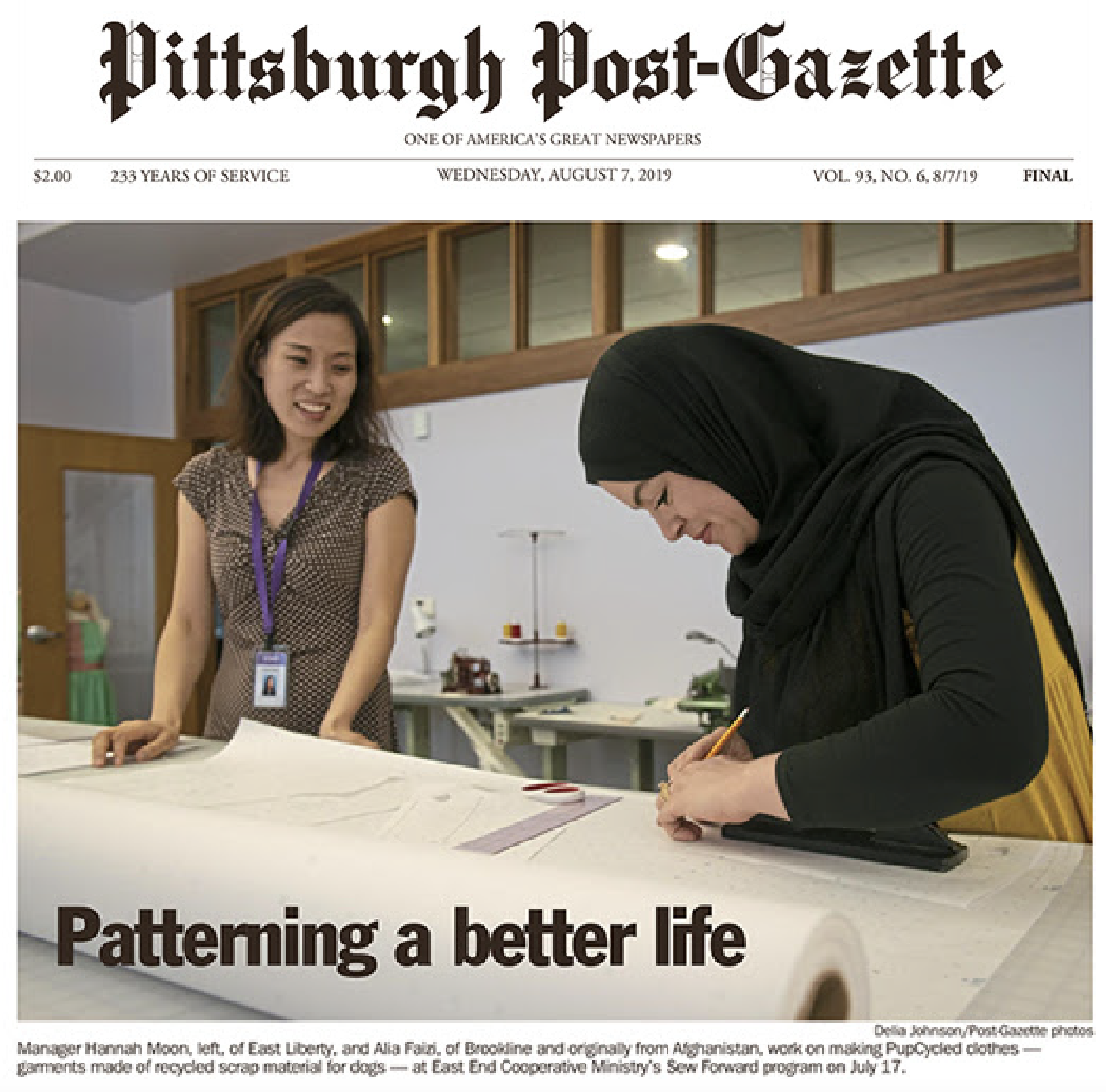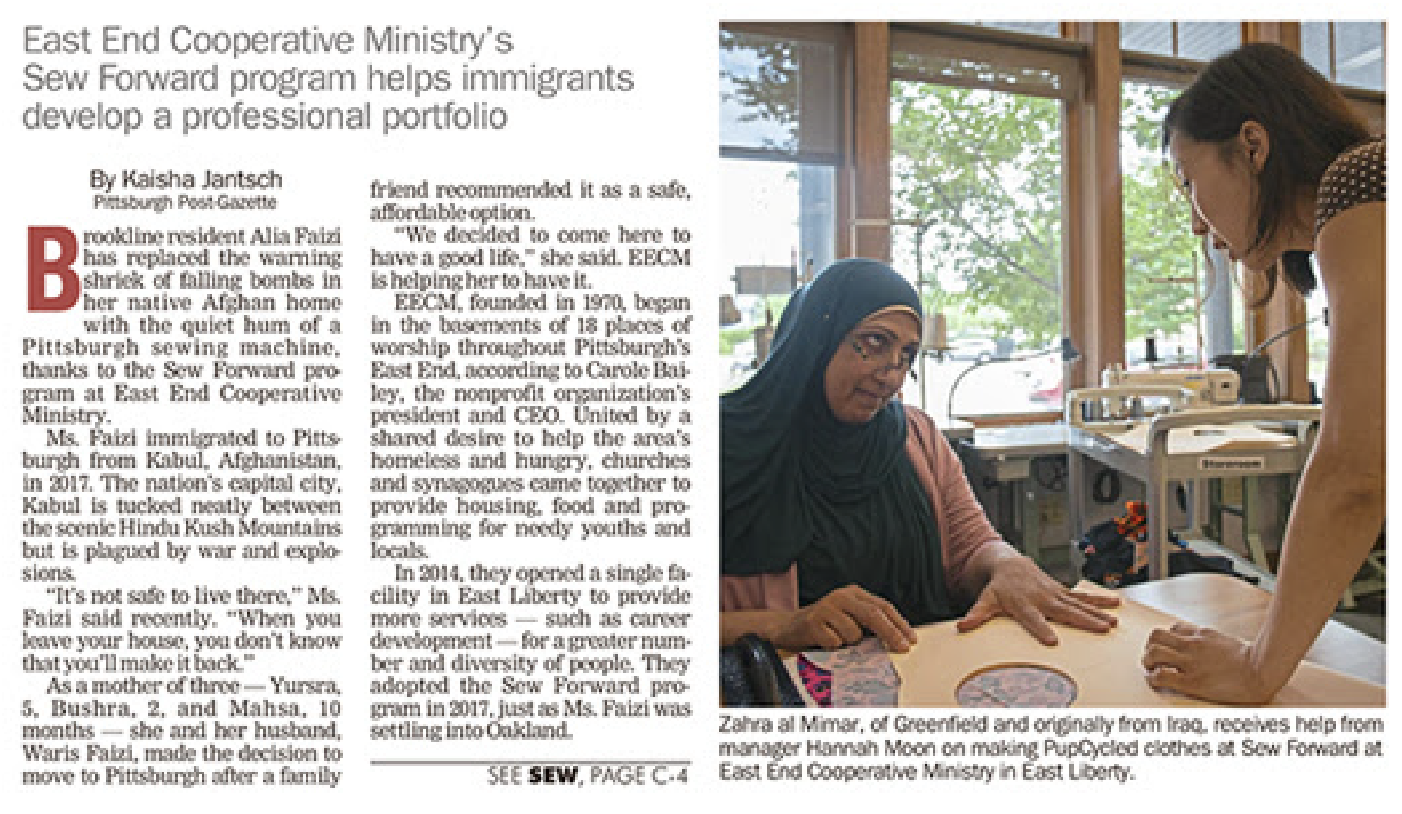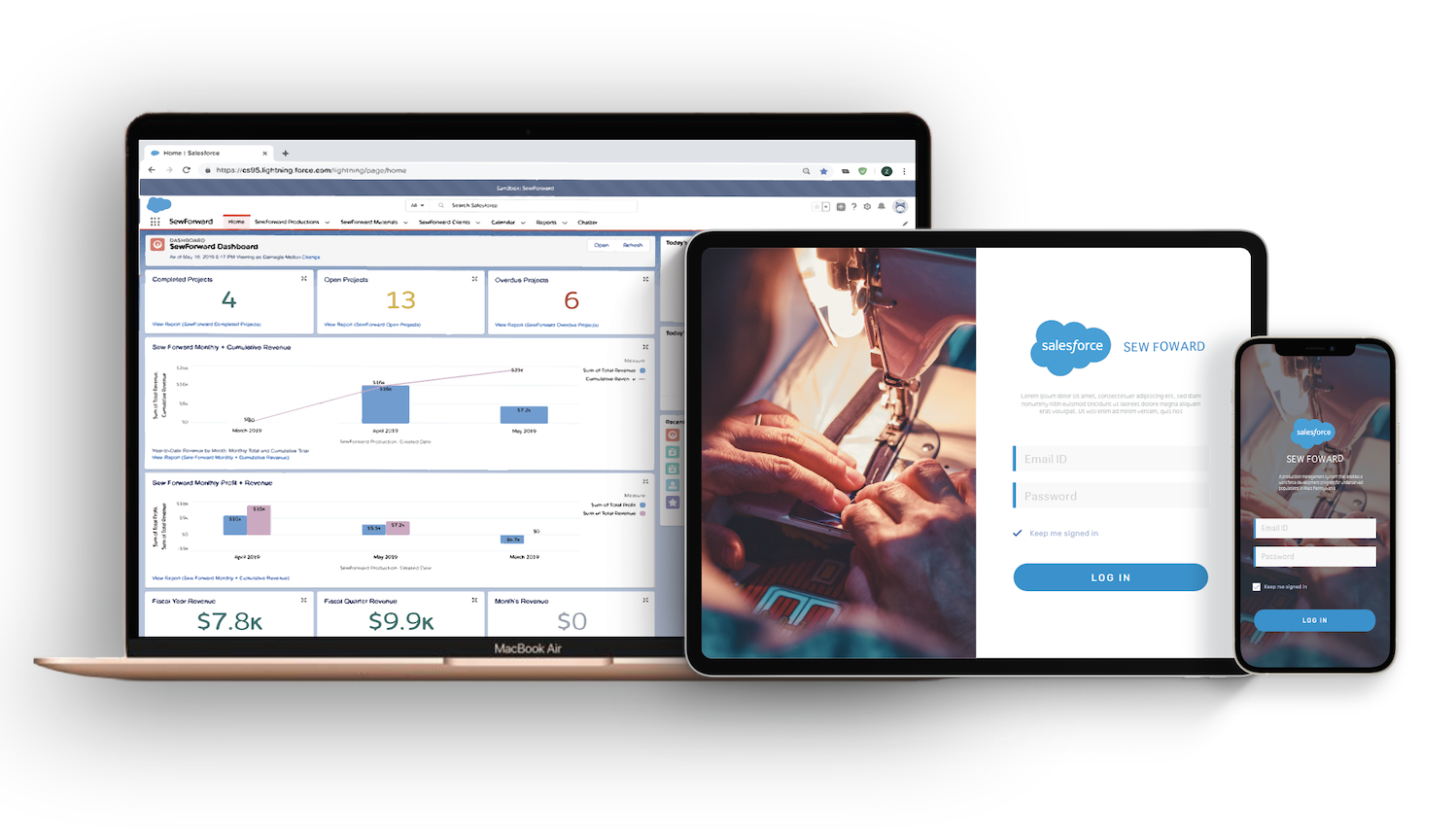
Sales Force Lightning System: Sew Forward
“Sew Forward” is a production management system that enables a workforce development program for underserved populations in West Pennsylvania.
- Deployed:October, 2019
- Client:EECM
- Role:Product Owner,
User Researcher,
UX/UI Designer - Final Deliverable:SalesForce Lightning
My Contribution
I was a product owner in this project. I guided a team of system developers while communicating with internal decision-makers and external stakeholders to build an integrated technology solution. I mainly focused on developing a useful, usable, and desirable product that serves various stakeholders seamlessly while improving design service, product development, and production management work efficiently.
Collaboration
This project is a collaborative project with a team of three information system students at Carnegie Mellon University.
Solution
The fully integrated and customized Salesforce is running. Each stakeholder has immediate access to the platform. This gives the organization’s internal teams full control over their workforce service, provisions for apprentice training, and plenty of room for future iterations.
Design Process
Considering the given time frame and scope of work, I decided to follow the agile development method. I thought the agile method would be a good approach as it accounts for related users’ input at incremental stages of the product development process.

Product Development Objective
Setting the right scope was the biggest challenge for this project because it would guide the user’s comprehension of the experience as well as strategic opportunities that might emerge for the program. In order to maximize the given time frame of developing a solution, I made sure to set goals that are clear, measurable, and defined by a time frame.
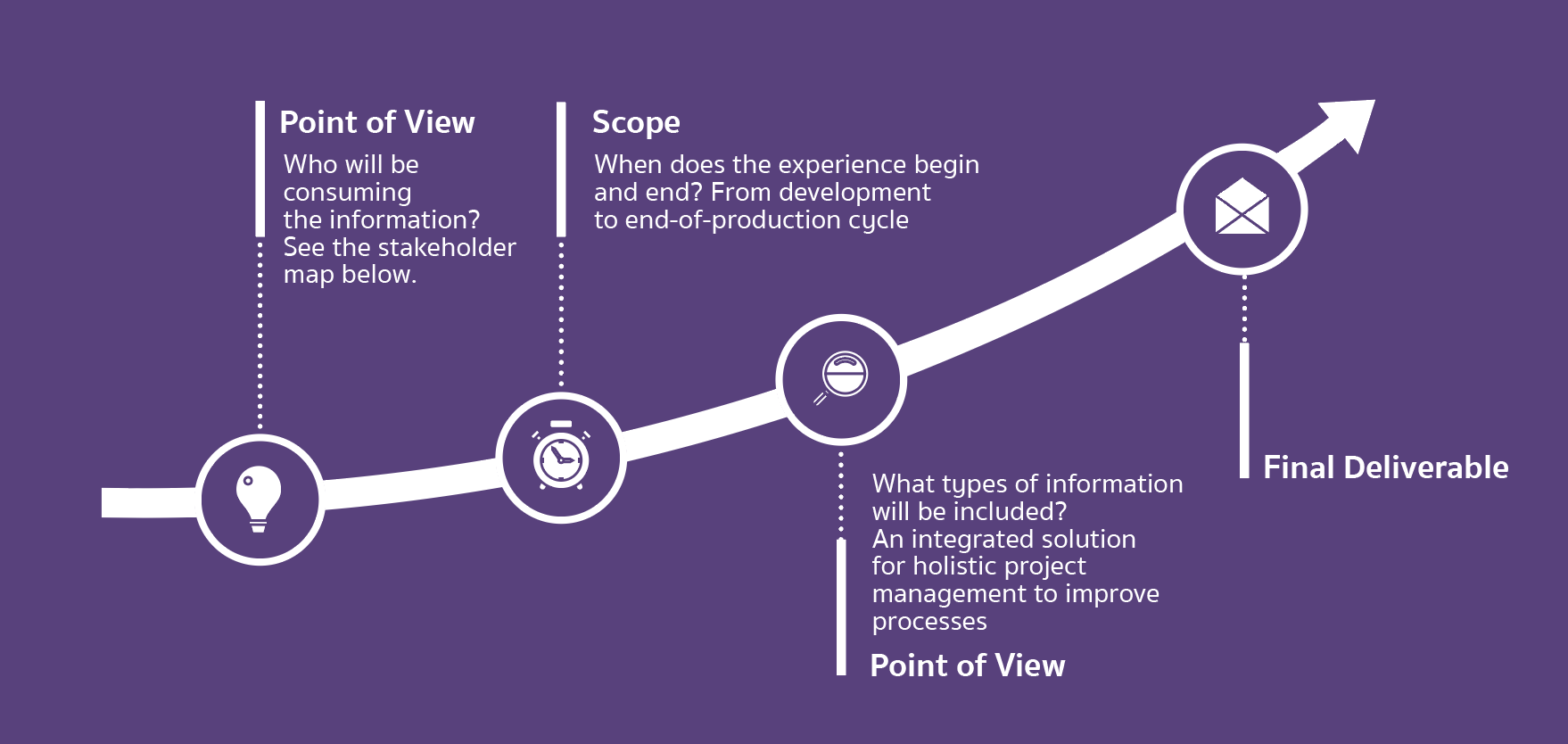
Then, I set measurable goals for this project
-See the numerical impact of the program at a glance, ideally on the first page after logging in
- Oversee each project status as a simplified workflow
- Generate reports in different formats: MS Excel/Word, and PDF
- Communicate with workers and assign tasks via a solution
- Analysis of data to identify revenue streams and focus areas for service opportunities
Put myself into Users' Shoes
In order to gain a holistic understanding of the problem space, the team reviewed
- the order history from 2017 up to 2019
- literature of other nonprofit workforce programs and their innovations
- national data and trends for social enterprise financial success rates
- the finance history of the program.
About Program
The Sew Forward program launched February 2017, providing technical education, access to professional machines, jobs, entrepreneurship training, and more, for exploring careers in the employment-diverse fields of sewing, tailoring and fashion design. In addition, the participants are taught soft skills, shown how to start a business, and how to use Etsy.
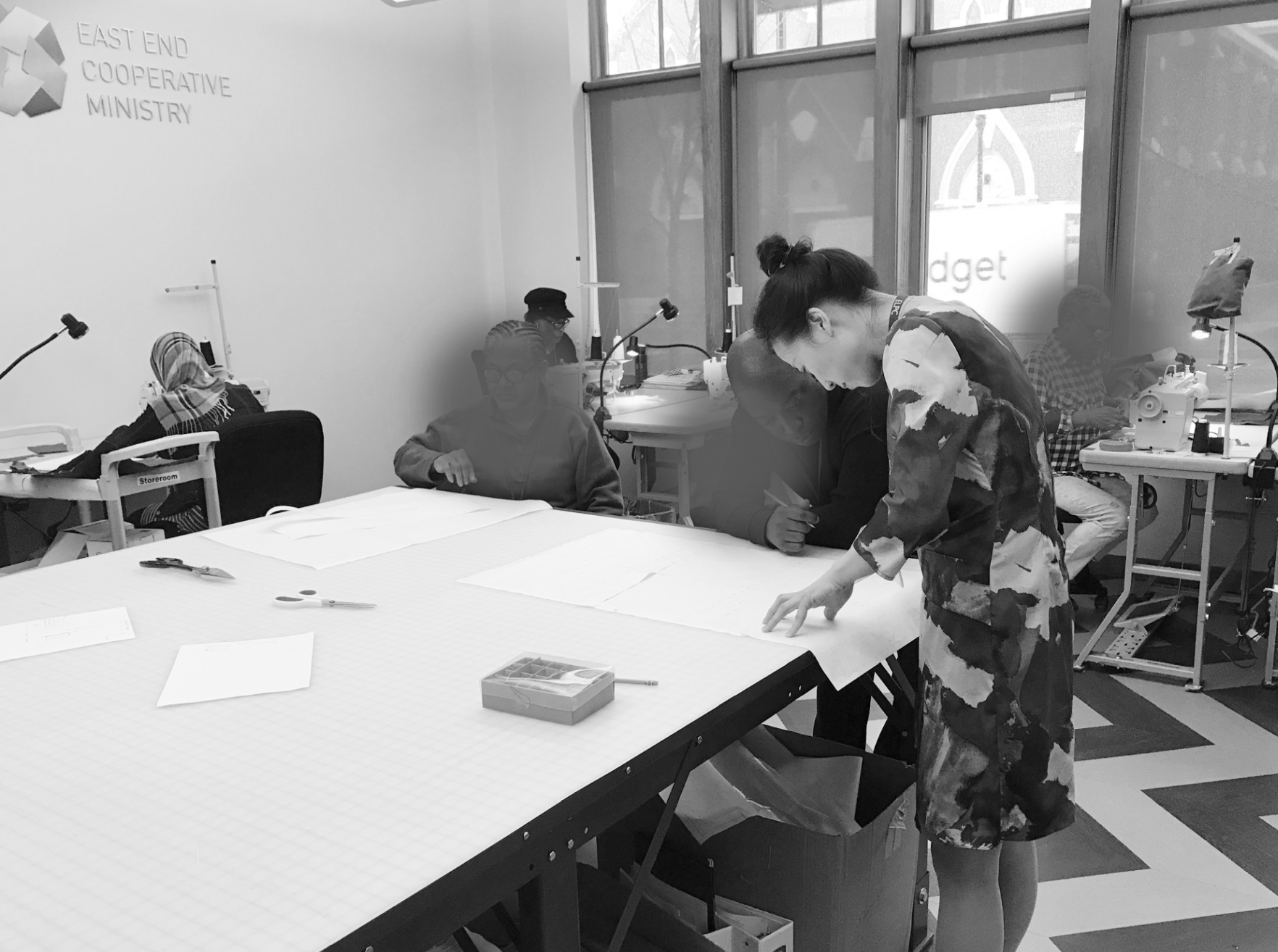
Develop Knowledge in Problem Space
Since the Sew Forward Program is the only mission-based design studio in West Pennsylvania that offers wholesome package design service, the program manager received a myriad of inquiries. Although she was grateful to receive orders, she was overwhelmed with the amount of work. However, since Sew Forward is only the program generating revenue under the EECM umbrella, she wanted to utilize technology while generating a stable revenue stream to support the entire organization and the program while decreasing reliance on foundation support. To delve deeper into the problem space, multiple user interviews were conducted among different internal and external stakeholders.
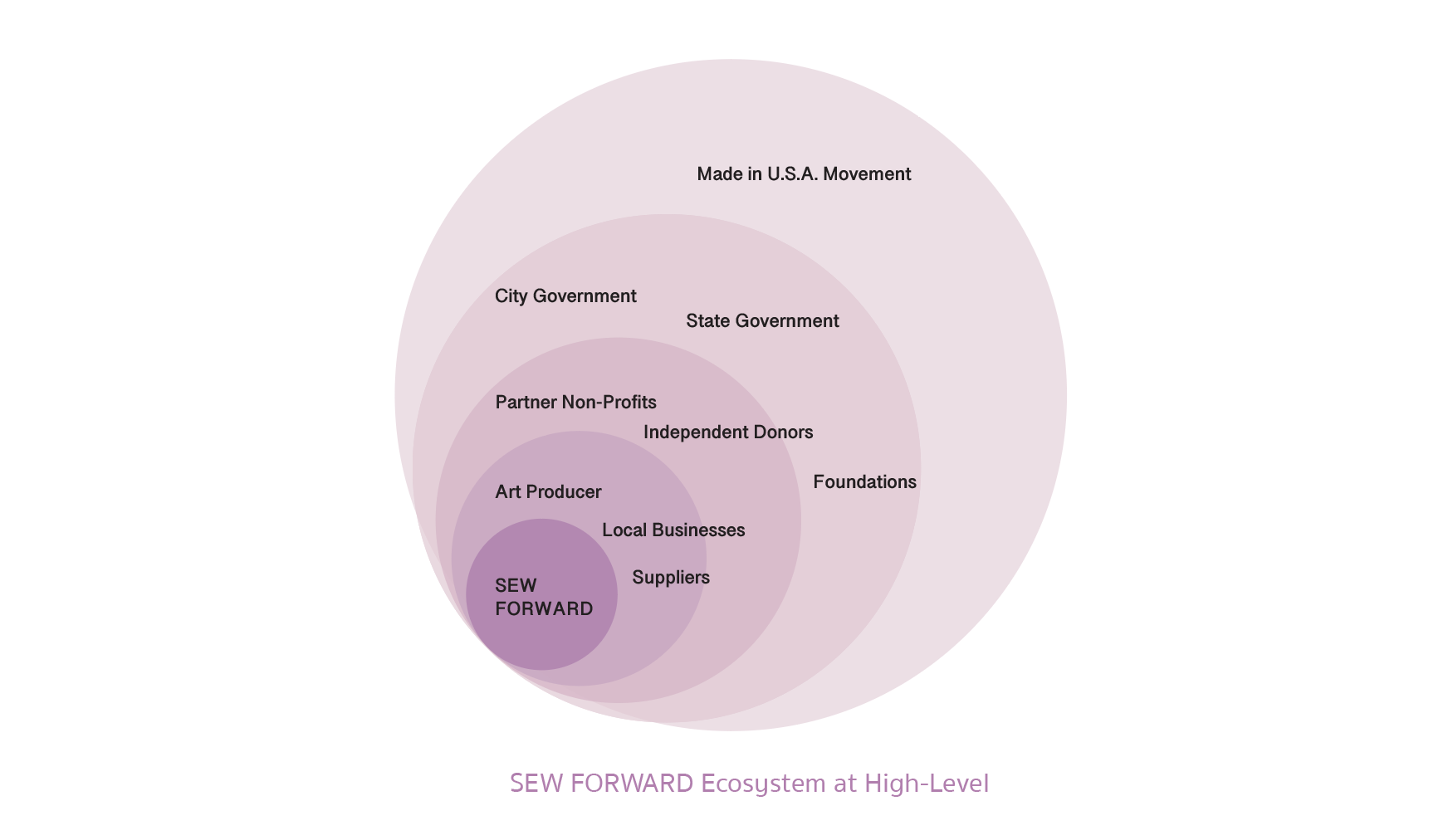
Stake Holders
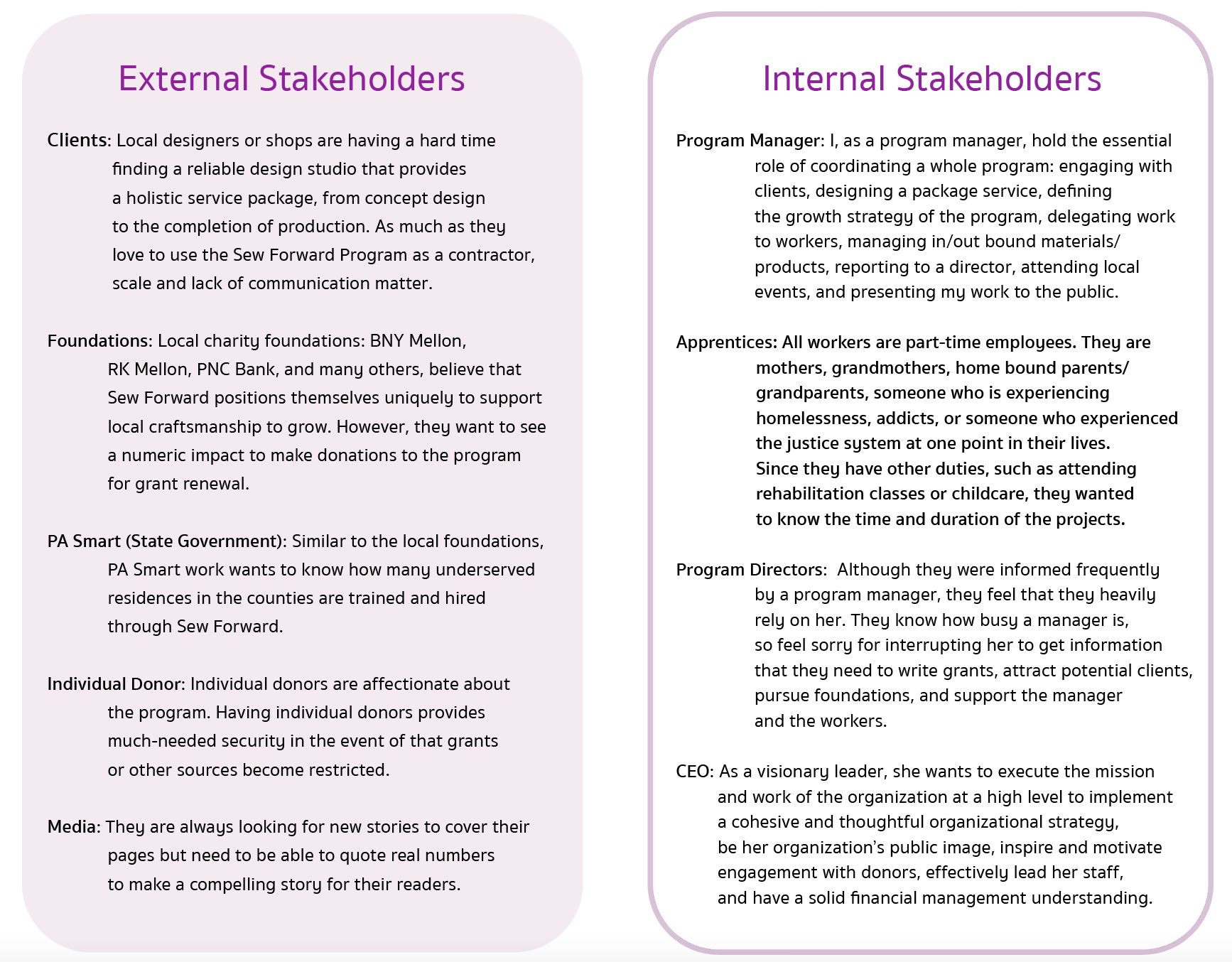
Current User Flow
Understanding the current status of the working process was important In order to improve the workflow. By drawing the current pre-production process and quote + estimate assessment process, I then drew the experience map to reveal the “Moment of True.”
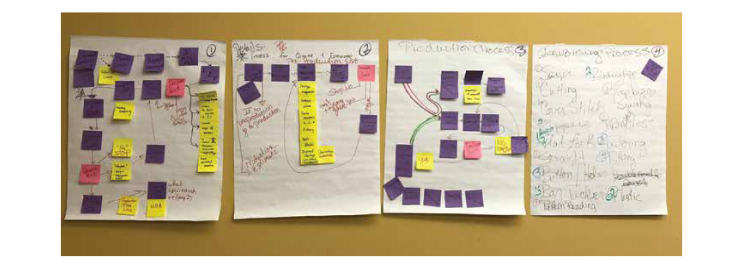
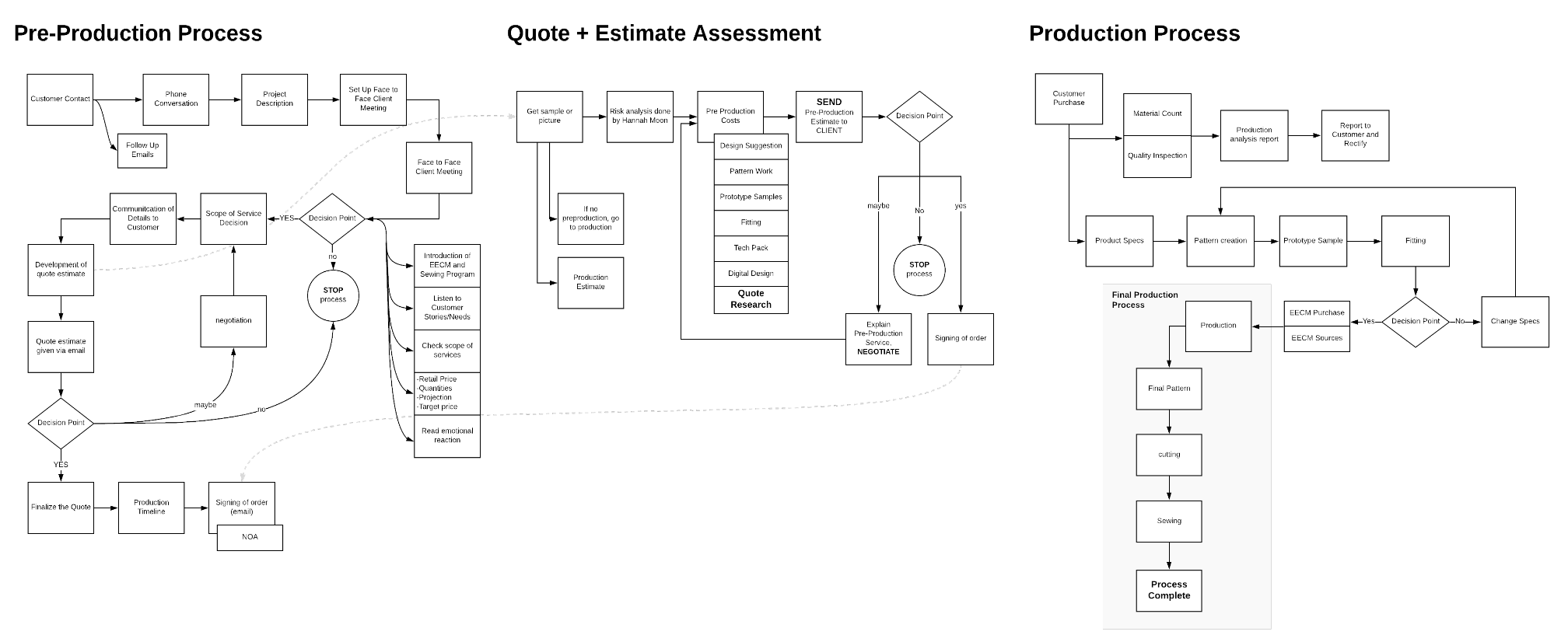
Define Product Development Opportunity
" How might we empower a program manager to automate her tasks while distributing service benefits amongst various stakeholders? "
Product Requirement
After fully understanding the problem space and each stakeholders’ needs, I saw there are some unmet needs and opportunity gaps throughout the journey. Based on all the insights that we found, we re-define the product development opportunity and key features for developing an MVP product.
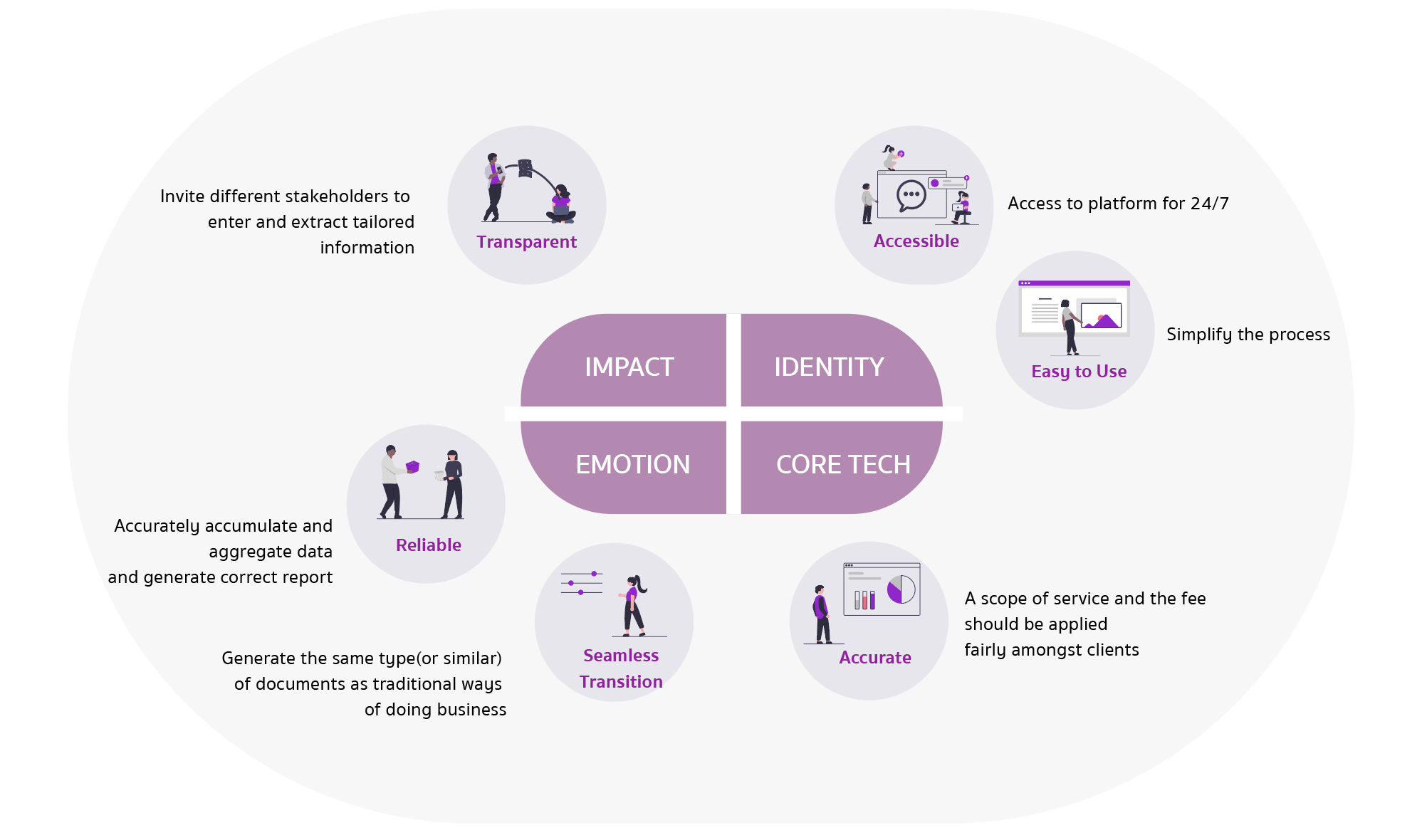
Development
Since the goal of our project is to track the flow of service and production, we want the potential tool to provide access and insight into the project workflow, track finances, and automate the tracking and monitoring tasks that the program manager is doing to maintain and run the program. Additionally, the team wanted to create a standardized database to allow the key player to keep a detailed and consistent record of Sew Forward projects, clients, suppliers, employees, and purchase information for materials. This information is currently stored in several disconnected Excel sheets rather than a standardized database, with only the program manager able to access and manipulate the data.
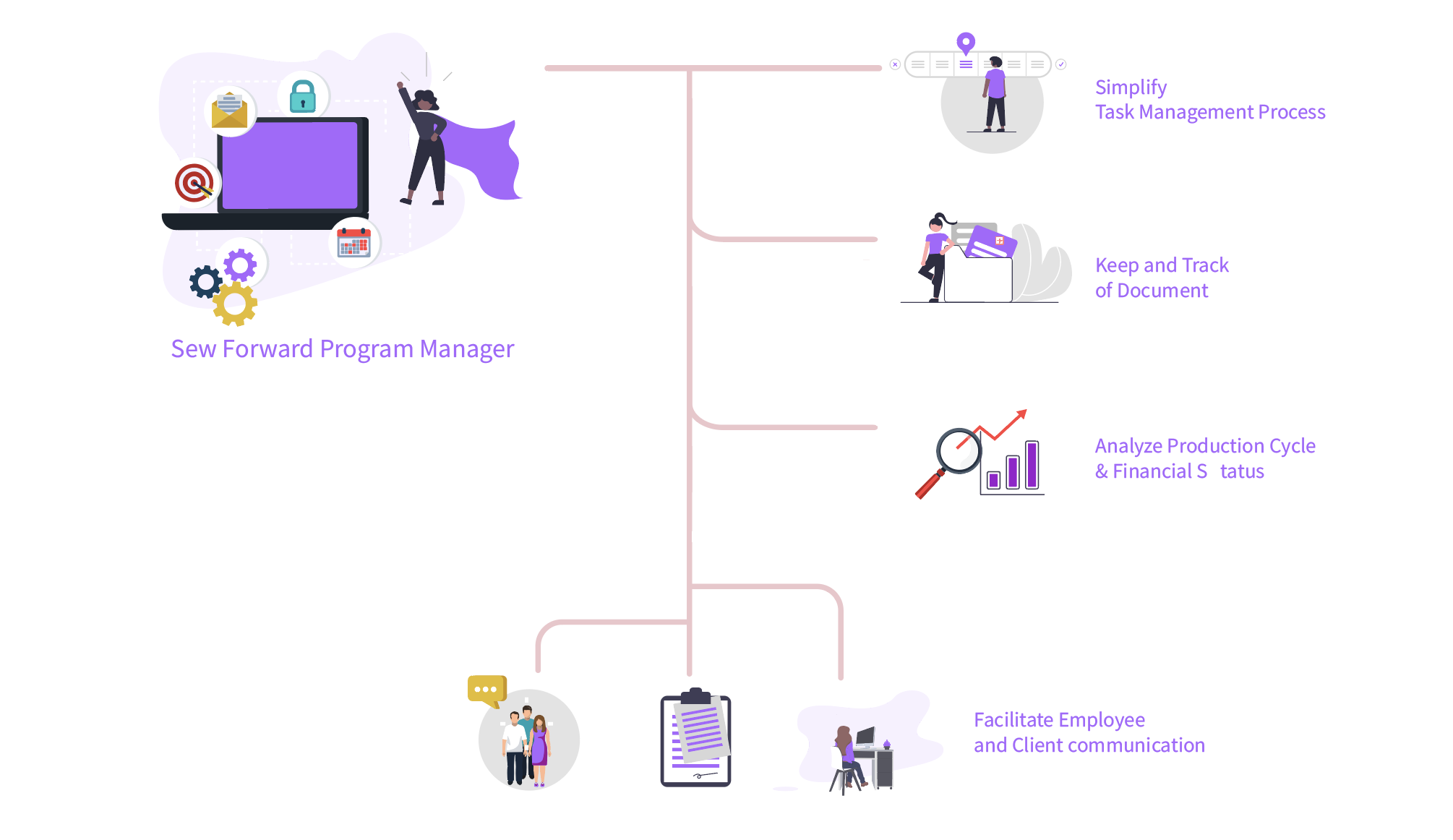
Information Architecture
The new system reinforces the strongest qualities of the Sew Forward Program through purposeful system experience, intuitive navigation, and the state of the art management platform.
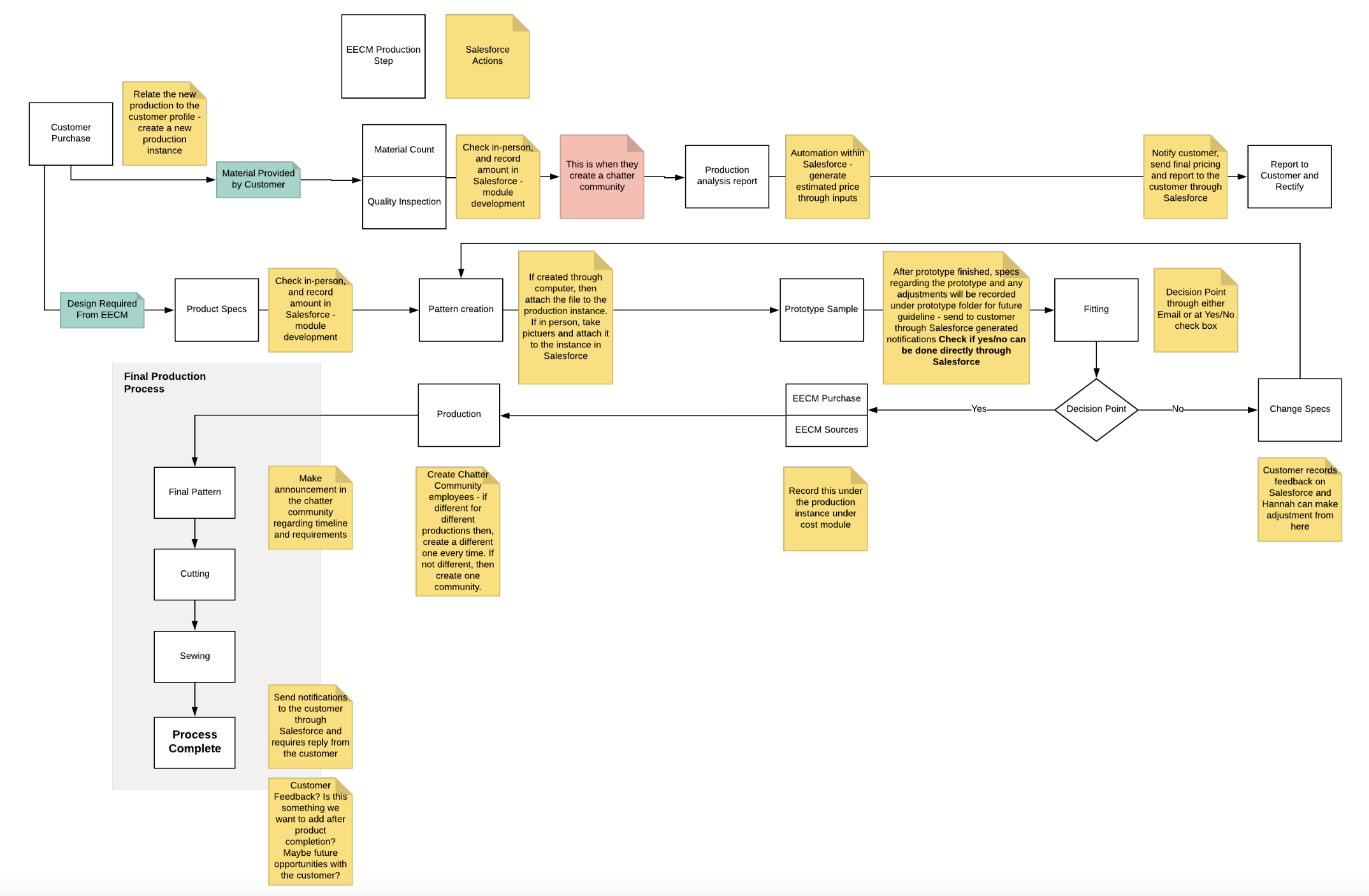
First Design
The team began to build an initial prototype based on the synthesized information. Carrying over a structure and communication strategy that effectively engages a key stakeholder was key to a consistent, clear, and intuitive user experience.

Iteration
I walk through the platform to test the functionality of the platform to identify hidden problems, find uncovered refinement opportunities, and investigating if the proto sample provide a seamless end-to-end user experience. The below are three important aspects addressed in this prototype.
The team incorporated the feedback and fixed the back-end supporting algorithms and related APIs.
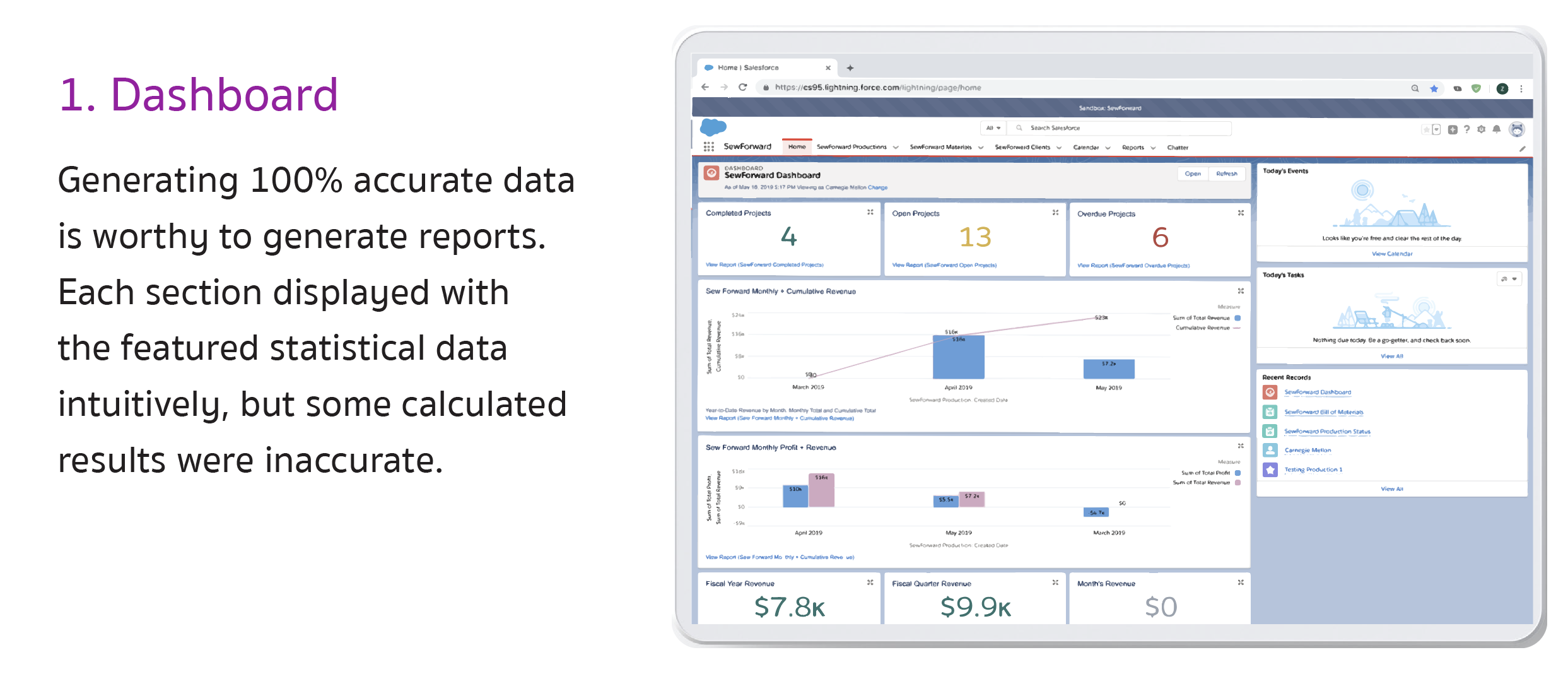
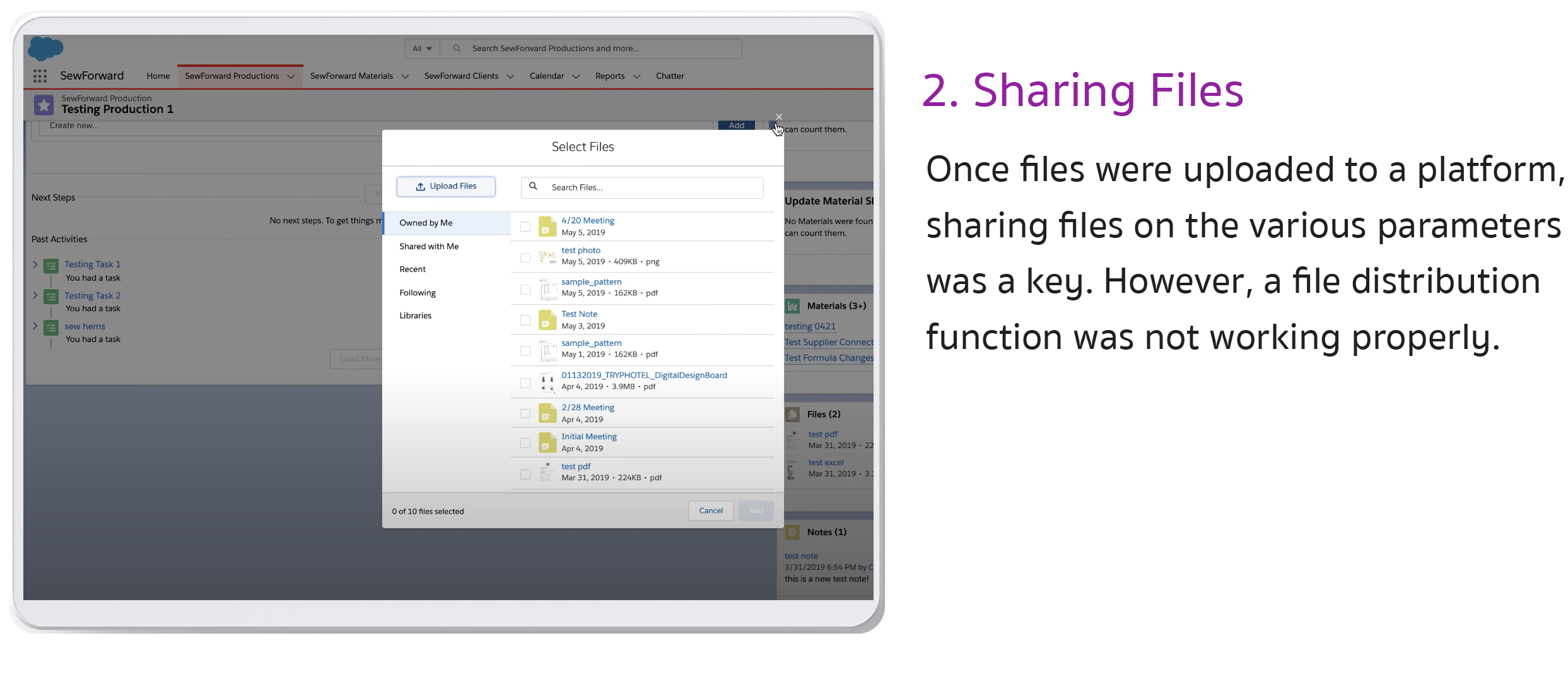
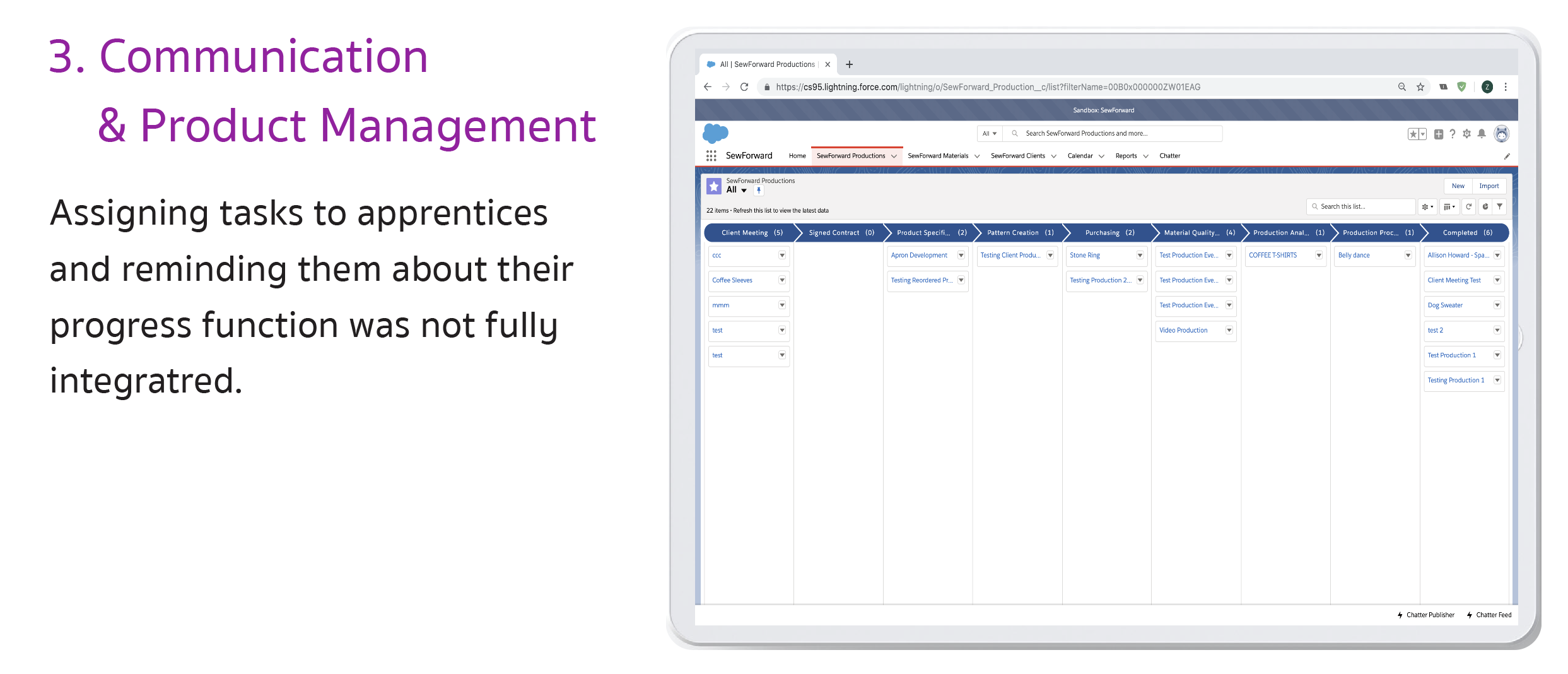
Final Delivery
The fully integrated and customized Salesforce is running. Each stakeholder has immediate access to the platform. This gives the organization’s internal teams full control over their workforce service, provisions for apprentice training, and plenty of room for future iterations.
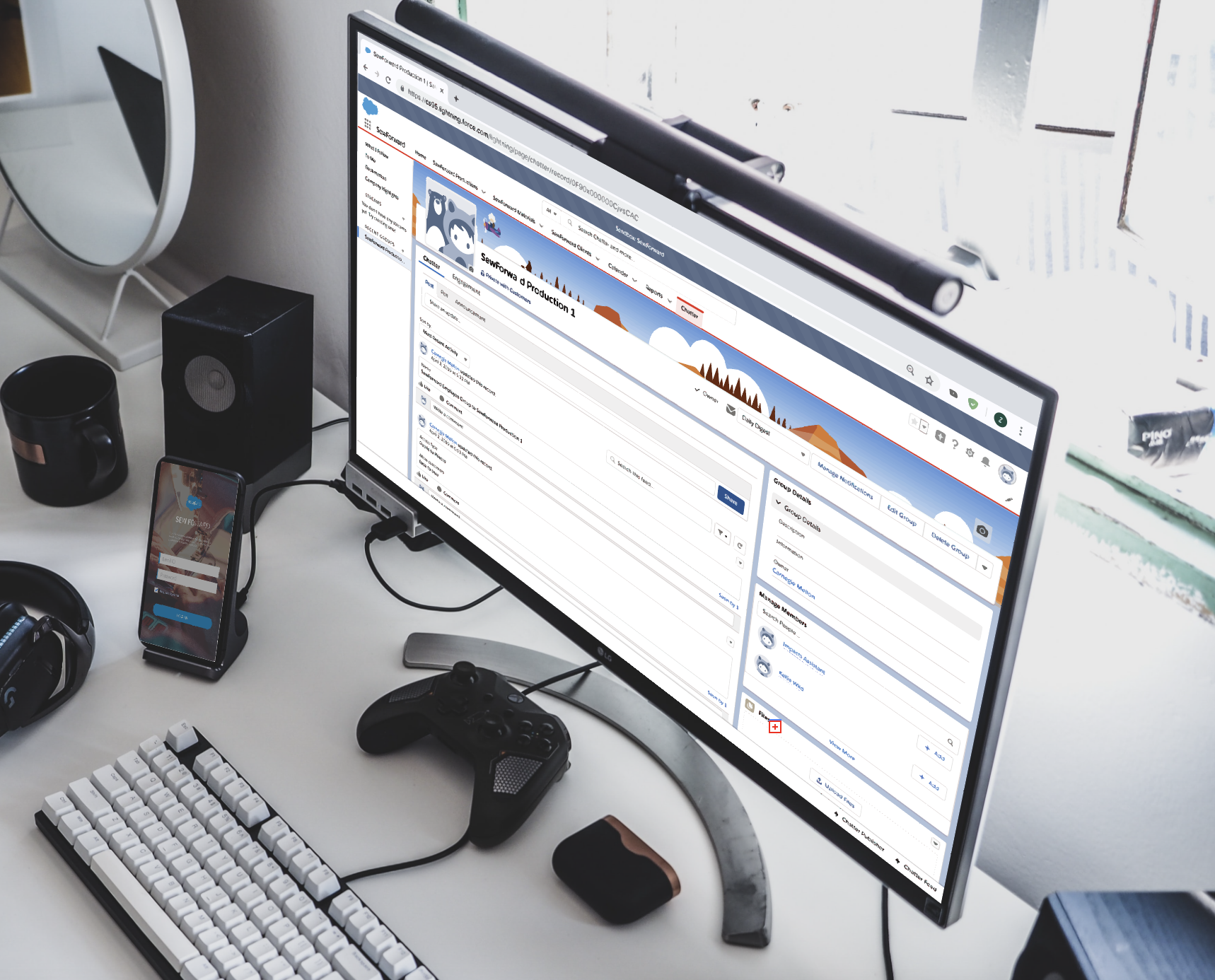
Reflection
As people recognized that we are making a good impact and serving our community in a meaningful way, my program appeared on a reknown news paper. You can read a full article here.
Although integrating technology into social service is never easy, developing a tool, generating a new service, or expanding impact requires an immense amount of hard work. Moreover, it's hard to convince internal and external decision-makers to invest in integrating technology into social services as people believe in the existence of a trade-off between social progress and declining economic efficiency. I began this project to prove the assumption was wrong.
I saw myriad of missed opportunities to design even better systems while I was working for non-profit organizations because they failed to consider the capability of technology and the needs of all of the people experiencing in the community service.
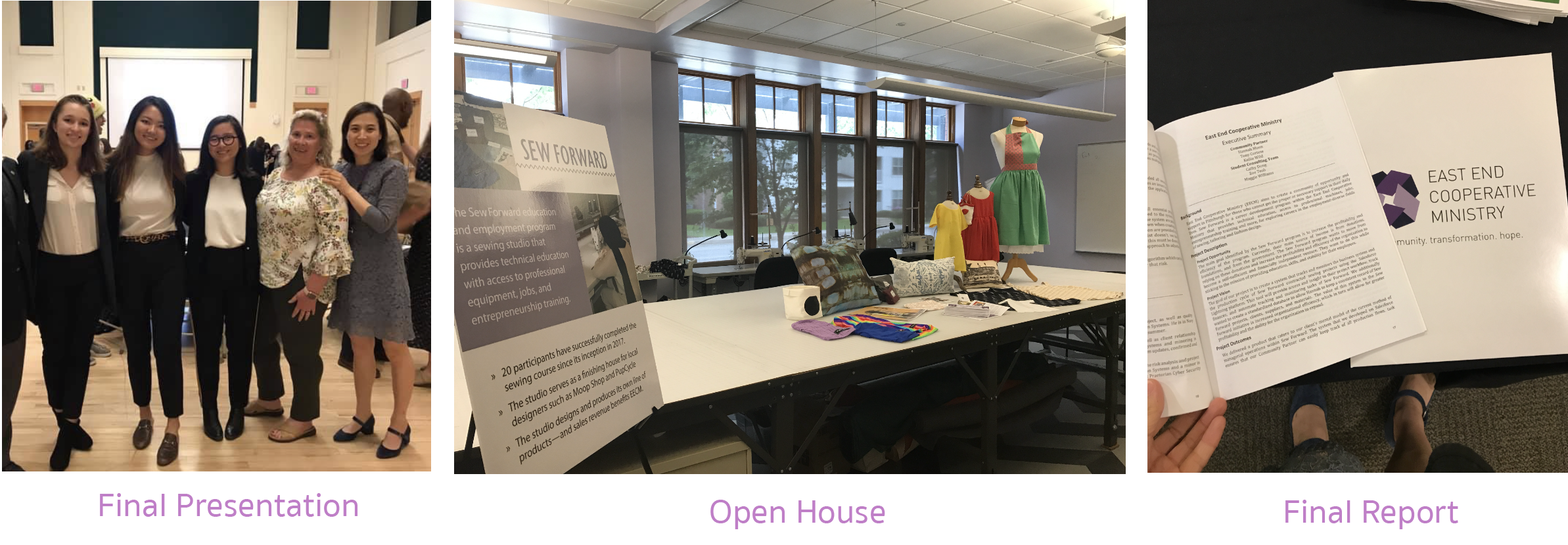
There are many things I would have done when I was working as a product owner for this project. I wish I was able to fully integrate financial reports, connect the platform to the overall EECM branding and invite more stakeholders at the earlier stage of this project. As a consequence, each stakeholder may feel that they also hold ownership of using the newly developed platform instead of being commanded by the system.

